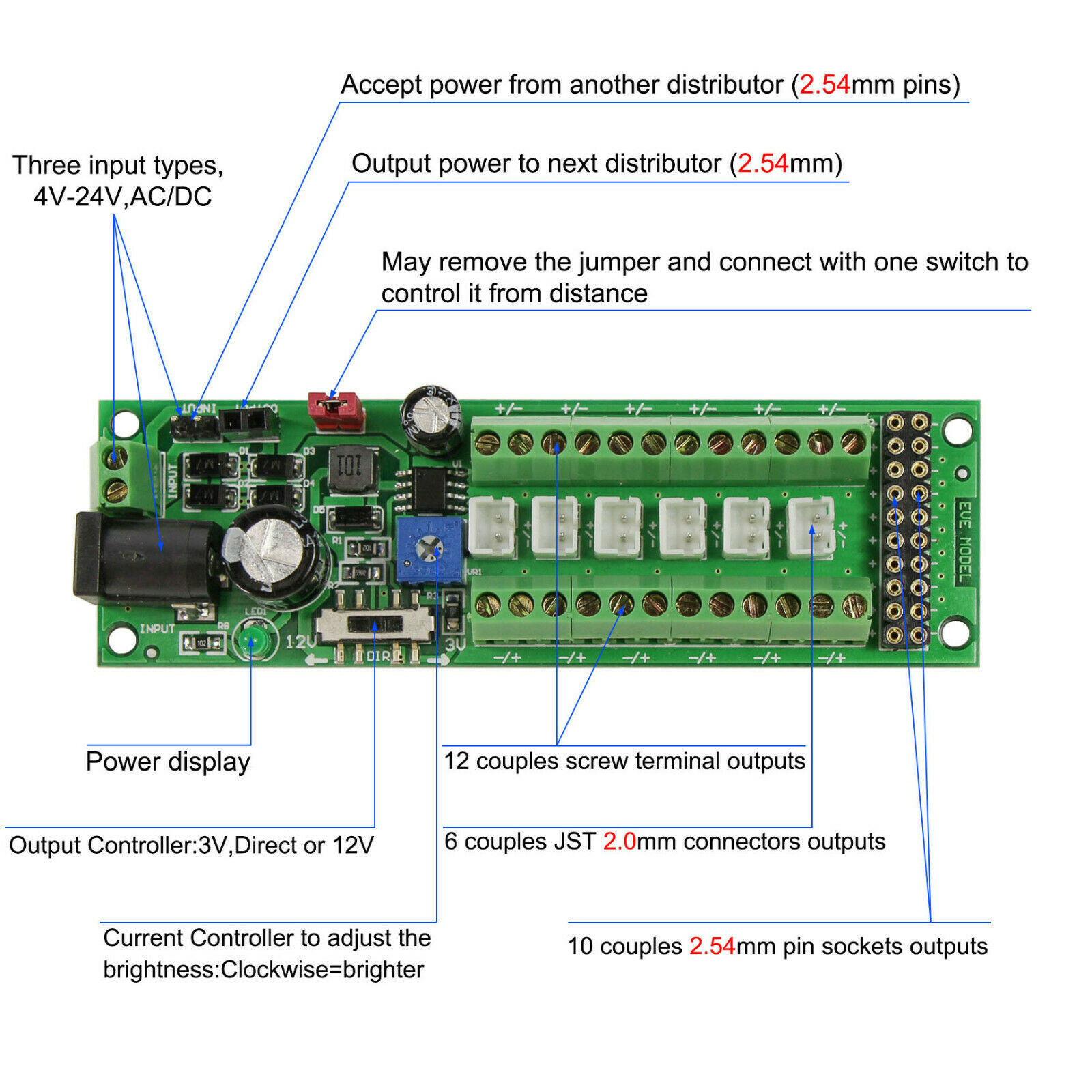-40%
Micro Red Color LED Lighting for Signal lights in Model Railroading (LED0002))
$ 4.35
- Description
- Size Guide
Description
Micro RedColor LED Lighting (603 size)
This package contains One Micro Red-Color LED for use with Signals in our store.
This Micro LED will fit right inside the signal heads of both our HO and N Scale signals.
Wires are 14" long.
RESISTOR SELECTION FOR USE WITH LEDs
CURRENT LIMITING
For ALL LEDs, some form of current limiting should ALWAYS be provided.
Typically a resistor is used, but a constant-current circuit is also an option.
determine the ideal resistor value, use OHM's LAW:
V= I * R or R = V / I
where V is the resistor voltage in Volts, I is the current in Amps, and R is the resistance in Ohms
(Don't forget: A milliamp is 1/1000 Amp)
The LED will use up part of any applied voltage, and the resistor must use up the rest when they are connected in series.
A typical white LED uses up 3.5 volts, while a typical red LED only consumes 1.8 volts.
If excessive forward voltage is forced on any LED, it will generally draw excessive current and burn out.
The series resistor prevents this.
Example: Assume the applied voltage across a white LED and a resistor in series is 8 volts,
and you want a current of 3 milliamps (mA) through the LED.
Since the resistor and LED are connected in series, they will have the same current but divide the voltage.
The LED gets the first 3.5 volts, so the resistor gets the other 4.5 volts.
The appropriate ideal resistor for 3 mA in this example is R = V / I = 4.5 / .003 = 1500 ohms.
The amount of resistance needed will depend on several things:
1. Available voltage
2. Desired brightness (personal preference)
3. LED package
4. LED efficiency
5. LED mounting in model
LED EFFICIENCY: (A college physics textbook refers to this as "luminous efficiency") --
The luminous efficiency of an LED can be thought of as the ratio of the number of visible photons emitted for each
electron sent through the LED. The relationship is reasonably linear
(see the plot of relative intensity vs. forward current on some data sheets).
Differing manufacturing processes and different manufacturers produce LEDs with efficiencies that vary widely.
Today's most efficient LEDs are at most only a few percent efficient.
An approximation of the value of LED efficiency can be found on the LED's specification sheet,
looking at the specification for typical luminous flux.
(Luminous flux is a measure of the total number of visible photons emitted, regardless of the directions in which they are emitted.)
Models and Kits produced by Showcase Miniatures, including Century Foundry products, are intended for model builders 15 years of age and older.
These products are not children's toys.










